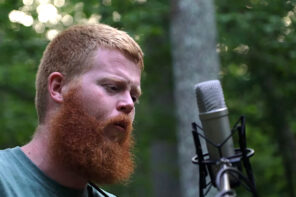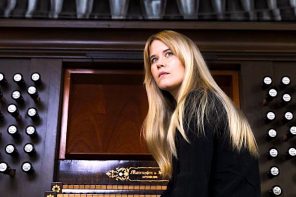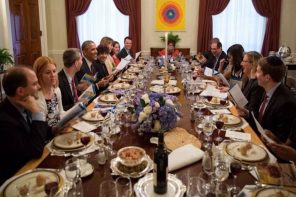Full disclosure: The Spirit of Fes Foundation, organizer of the Fes Festival of World Sacred Music, paid for my airfare and lodging to attend the festival. They also provided full access to all concerts at no cost.
I recently returned from Fes, Morocco, where I attended the 16th Annual Fes Festival of World Sacred Music. Almost a decade ago, I fell in love with a recording of some of the concerts from an earlier festival. The CD, B’ismillah, had performers from various religious traditions, and I remember thinking it was a wonderful way to showcase the things that people have in common. Although I have become more cynical about the power of simply listening to music in the decade since I found the CD, I still had high hopes for the festival. As a festival for music, it was beautiful, but as a venue for intercultural understanding, I believe it missed the mark more than it hit it.
The concert day in Fes was split into three segments. An afternoon performance of experimental or lesser-known work, an evening performance of more mature and well-known work, and finally a late night performance of local Sufi (esoteric) groups.
Musée Batha
The afternoon concerts, at Musée Batha, were full of revelations of interesting musicians. Three highlights from the series of performances were the Baghdad-Jerusalem Ensemble, the Dhafer Youssef Quartet, and Parvathy Baul.
The Baghdad-Jerusalem Ensemble were Jewish musicians performing in the art of Judeo-Arab music. Extremely talented musicians, they captivated the crowd demonstrating the rich cultural traditions that are shared by Semitic peoples, and helping to erase the idea of a dichotomy between Jews and Arabs.
Dhafer Youssef called upon the poetry of the Abu Nawas, a 9th-century poet known for his wine odes. (PRI’s The World will run a long segment on this performance, including more thoughts from me, on July 5, 2010.) Although the music seemed incomplete (as though Youssef was not finishing his thought), and often the lyrics were underutilized and unintelligible, the use of Abu Nawas was brilliant. In contemporary Muslim discourse Abu Nawas (among others) is held up as an example of a civilization that exhibited a cosmopolitan ethic. He would write about imbibing in a forbidden substance, not allegorically as later mystics would, but literally. Yet he was feted as a great poet, which he is. By focusing on Abu Nawas, Youssef suggests a different way of religious confidence, not with shrillness, but with quiet dignity.
By far, the greatest highlight for me was Parvathy Baul. The Bauls occupy a liminal space in Bangladesh/Bengal, with a religious identity that can be seen as both Hindu and Muslim. Musically, they function in a similar way to qawwals in northwestern India and in Pakistan. Their music draws on Indic and Islamicate sources. Parvathy Baul was the first female Baul I had seen in public, and her music demonstrated the ways that cultures combine to create new forms. The song in the clip below ends with an invocation of figures normally associated with the qawwali tradition, showing how the Baul tradition is still evolving.
Bab Makina
The main stage, Bab Makina, was filled a few great performances. One night the stage was share by Sufi Group Mtendeni Maulid of Zanzibar and the Master Drummers of Burundi. Although both are from East Africa, they demonstrated very different musical sensibilities. The large Zanzibari group was rhythmic and melodic, using lyrics to praise God and Prophet Muhammad. The Drummers were obviously percussion-heavy, and were ecstatic in their performance. This geographic nearness with a strong performative divergence helped to illustrate that geography is not sufficient to tie people together.
Jordi Savall, a Catalan composer, performed his piece, “Jerusalem: City of Two Peaces (Peace on Earth, Peace in Heaven).” The work attempted to show how Jerusalem is sacred to all three Abrahamic traditions, working through the history of the city. In the beginning, there was an odd moment when the program said there was a selection of apocalyptic scripture from each tradition, but then included the Fatiha, or opening chapter, of the Qur’an, which has nothing to do apocalyptic visions. In fact, considering how much material there is in the Qur’an about the apocalypse, whoever choose the Fatiha must have been inexcusably ignorant, or worked hard to ignore the text. Aside from this odd combination, the work succeeded in showing how the city of Jerusalem was once the home of a wide variety of people; and perhaps could be again.
The closing concert of the Fes Festival was the Blind Boys of Alabama. It has become tradition for a gospel group to close out the week of performances. I am not sure why, but the Moroccan audience—and Bab Makina has a large number of upper-class Moroccans in attendance—really enjoy gospel. It’s an appreciation that appeared to cut across generations. Based on comments I heard, people are aware that many of the songs praise Jesus as the son of God, an idea that is anathema to Muslims. Unfortunately, I could not understand the appeal, outside of the aesthetic, but it was wonderful to see so many people appreciating the art form.
Medina Nights
This year was the first year where the festival introduced “Medina Nights.” During one night a variety of acts were held simultaneously in new venues throughout the Medina, or old city. While an excellent idea to get to explore the city, it made it difficult to see more than a couple of performances, and it looked like there were some great acts. One group of note was Gülay Hacer Toruk and Group. The group was Turkish in origin and sang in a wide variety of languages, including Ladino. Since they were performing in the Jewish Quarter of the city, near Synagogue Danan, it seemed like an appropriate. The clarinet player appeared to be ill-at-ease throughout the performance, and it was announced that the group’s ney player had become sick and the clarinet player was a last-minute addition. Once that was explained I began to realize that the music did not seem forced, it only appeared that way. It was an amazing natural fit, and Peter Culshaw, in The Telegraph, thinks it’s because of the natural klezmer associations of the music.
Sufi Nights
People who have been to the festival before told me the most addictive part was the nighttime performances of local ecstatic Sufi groups. They speak the language of the locals, they know the cultural idioms, they know the people, and most importantly, the people know them. Going to these concerts, you understand how integral the mystical tradition and devotion to God and the Prophet Muhammad are to the people. Because these concerts are free, the organizers are often turning people away. The crowd interaction is unbelievable, as they respond to the calls from stage as though they had been rehearsing together. At one performance, while standing near a structure built to be “stable” for the sound board, I actually felt the earth shake. These devotional songs are also popular songs, as people continue to listen and chant them everywhere.
Conclusion
I think that the Fes Festival brings together an amazing group of musicians, and the space to demonstrate experimental pieces is fantastic. I would have loved to see them extend this concept and create a space for various artists to jam together. I think having the Baghdad-Jerusalem Ensemble in conversation with Dhafer Youssef, for example, might have been a great way to extend both of their musical visions. I also think that the organizers need to avoid being blinded by names.
Talvin Singh, a British-Asian artist whose art I greatly respect, had a new project called Sizero. The project was just not ready for the main stage, but would have worked well on the afternoon program. It may also have forced them to scrap the insipid, distracting, and general disaster of the video production. Sister Kee, brought on by the Blind Boys of Alabama, was just not ready for any stage lyrically. And the hype of the Rumi Ensemble should not be believed. Their work is not groundbreaking or revolutionary. I would say it is derivative and pompous; although I heard more charitable people categorize it as “interesting,” and “full of potential.”
Perhaps the easiest thing for the organizers to improve is to give a better sense of what ties everything together. Many of the notes were sparse and read like press releases. The organizers’ vision was not made clear at all. I think short one-pager on the interaction among cultures, the sharing of music, the ability for music to suggest a new way of living together, or any other point that gave the festival a deeper sense of purpose would have been appreciated. Otherwise it becomes a type of cultural tourism for visitors where nothing is learned, but that item is checked off a list. For locals who can afford it, it is a “see-and-be-seen” event rather than a celebration of the cosmopolitan nature of Fes. While the Sufi Nights performances were wonderful, they were ultimately just different groups performing similar music. Some notes about the shared background of the orders and the musical history that tied them together would have added depth to these wonderful performances.
Much like my criticisms from last year’s Muslim Voices Festival in New York (1, 2, 3, 4, 5), I think there needed to be a stronger educational component that explained things to the audience. Interestingly, last year I wrote that the visiting Aissawa Ensemble seemed to have no issues with female participation. In Fes, there were women on the stage with them, as there were with many of the local Sufi groups. It was a natural and integral part of the traditions.
My starry-eyed dream of going to Fes for the festival is now fulfilled. Amazingly, despite the aforementioned criticisms, it was just as great as I thought it would be. The Fassi (natives of Fes) were welcoming, and the city does serve to break down many US stereotypes of the Arab world. It is a developing city, not dependent on oil wealth. Women dress as they please, as do men. Mosques are ubiquitous, if often below capacity. The old city, a UNESCO world heritage site, contains the homes Maimonides and Ibn al-Arabi. The music at the festival was absolutely wonderful, and did speak in a language beyond language. Now, they just have to make that language available to other people.




